#natural blondes who bleach their hair representation
Explore tagged Tumblr posts
Text
is this a good time to talk abt how roope hintz and sergei fedorov are the same dude or

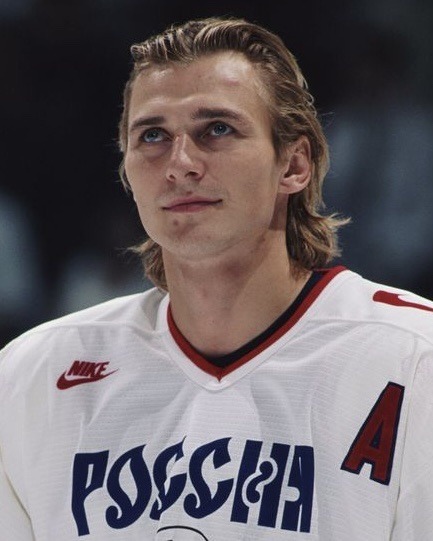



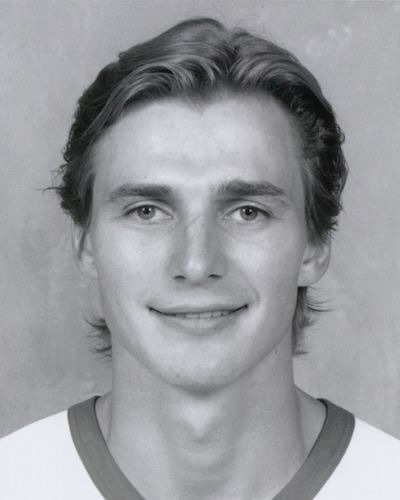
#the math on the polls isn’t mathing#i’m sorry if u voted for sergei and not roope u r not serious ppl i fear#natural blondes who bleach their hair representation#< is this a true thing abt fedorov idk#roope hintz#sergei fedorov#okay … good night#yap yap yapping
198 notes
·
View notes
Text
Bleach’s Issue with Queer characters (3/3)
[1][2][3]

So then there’s Giselle (and to a less canon extent Shutara) who I think Kubo erroneously categorizes as similar to both eachother and to the above gay men stereotypes. And I think understanding Kubo’s approach to Giselle hinges on what he set up (but didn’t follow through on) with Shutara.

I’ve mentioned before, but I’m pretty certain think Shutara Senjumaru is meant to be a kabuki onnagata*. Not in-world, mind you; I don’t think she is somehow employed as an actor in a literal kabuki theater. (i would hope that was obvious, but one can never be too sure...) Just like Tier Harribel isn’t literally a light skinned, dark haired person doing gyaru/ganguro fashion, her presumably naturally tan skin and blonde hair is based on the general aesthetic. Shutara likewise is channeling distinct look and feel that draws from a mix of oiran, geisha, and kabuki aesthetics. (granted all three are closely related in influencing one another’s aesthetics in the first place)
But while the look and even the demeanor tend to play all three ways, I think the particular fixation on clothes, costuming, and the somewhat adjacent theme of “disguise” that Kubo has shown to put emphasis on in this kinds of situations, as well as the fact that he gave her a distinctly masculine name, Senjuumaru, point to her being some form of queer, albeit something Kubo seems to pretty clearly lack the understanding to better articulate himself. Is she a trans woman? Gender fluid? A male identifying transvestite? There’s not enough real material for us to draw that particular line, but I don’t think it’s a stretch to conclude that she’s not a cis woman.
*Kabuki is traditionally an all-male theater form, and “onnagata” refers to actors who specialize in playing women roles. Generally all actors train in the delineated masculine and feminine styles, but an actor’s career sticks to just one or the other...
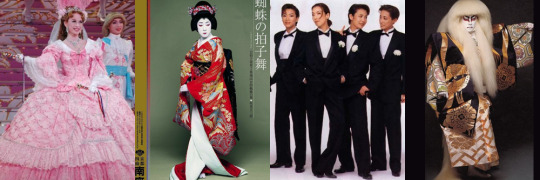
...There is a whole big thing about how cultural institutions like kabuki and takarazuka theaters’ creation of socially acceptable and even celebrated, public and professional genderqueer spaces creates a myriad of gender dynamics that just don’t exist in the West, and it’s something that has made the attempt to adopt a globalized understanding of queer identity a little trickier in Japan:
In the West the gender binary was rigidly enforced such that to explore alternatives was basically uncharted territory (that’s an oversimplification, but you know what I mean; There’s a lack of contiguity with those who came before) but with japan there were already nonbinary spaces in place, and the lines around those don’t neatly line up with the ethnocentric western ideas some people try to pigeonhole those into. In general, it gets dangerously close to just flat up colonizer rhetoric.
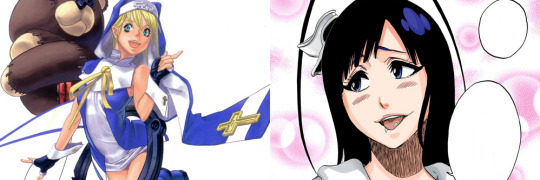
(forgive the outdated reference image, but honestly I don’t know what even counts as a recognizable example of a “““trap””” character these days. And I use that term with GREAT reluctance, but I want to differentiate the exploitative cliche usage of a trans caricature from any actual representational trans character.)
(ya know what, let me pull these out of the tags because not everyone is seeing this from my original post and obviously the context has changed around bridget since i wrote this... #geez this thing is so old that bridget wasn’t even reintroduced to guilty gear yet #in fact strIVe wasn’t even a thin on the horizon this far back)
Anyway... That all just leaves Giselle. And let’s be real, there’s no excuse for this one. Maybe that seems like a weird anticlimactic place to take this series of posts... like, after all this, maybe it feels like I should’ve had some equally obtuse logic to explain this one away as a matter of escalation or as a Rule of Threes. But no, not really. I just think it’s a little unreasonable to treat the massive screwup that was Giselle’s portrayal as part of some sort of bigger ongoing trend, when it’s really more of an unrelated outlier in a bigger umbrella subject.
She is in fact a bad case of the long standing anime/manga fetishization of transwomen as a concept, as a spectacle to be gawked at and made the butt of jokes or to be included specifically as an anomaly. And in Giselle’s case her specific depiction as a depraved, physically/sexually abusive villain on top of that is an explicitly toxic combination.
In spite of that, I still don’t think Kubo actually meant for it to reflect poorly (not that that matters or diminishes its harmfulness) I think he genuinely just has no real grasp of what that kind of characterization means. I say that largely because of the way he treats a lot of her role in the plot. Not that she’s integral to moving it forward, but that she occupies space and survives in the plot as long as she does, even when she could've been conveniently (and frankly more neatly) written out;
He seems to like drawing her and gives her a range of expressions and gestures (something he doesn't afford all his characters, even some of his major ones)
He likes to expand on her powers and gimmicks beyond what was necessary if he'd been aiming for minimum effort
He even paired her off against his personal favorite character, Mayuri.
Point being, Kubo seems to personally like Giselle as a character, but he took a horrible insensitive and ignorant path in writing her character.

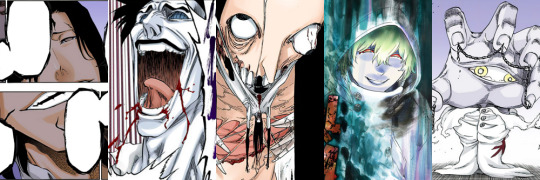
But an undeniable fact is, she’s not alone as this kind of villain, she’s just the only one that happens to be trans.* Mayuri himself, Aaroniero, Szayelaporro, Zomarri (just a little bit), Tousen (at the very end), Tsukishima, As Nodt, Gremmy (a little), and Askin all to some degree dip into this shtick Kubo does where his villains aren’t just sadistic but ecstatically so, to the point of intoxicated, gleeful derangement. Yet in spite of that, those characters are all usually meant to be “cool,” not detestable.
Remember, Mayuri was initially written as, hands down, the most despicable characters in Bleach —he was abusive and sadistic, misogynistic, actually physically grotesque, predatory, dishonorable sneaky & underhanded, complicit in a genocide, just in general a clearly communicated mad scientist villain, and he was all of this in direct and deliberate contrast to Uryuu’s chivalrous personality type(already established in his defending Orihime from Jiroubou) as well as Nemu’s noble stoic subservient victimhood— and yet he’s also Kubo’s favorite character in the series. Kubo doesn’t actually write Giselle any particularly worse than the others, BUT he also doesn’t disassociate her being trans from her being villainous, and again, even incidentally, that manages to perpetuate a harmful narrative in the overall.
*(Actually, I’ve kinda touched on it before but I sort of suspect Mayuri could be trans, in which case; OOPS, that makes two, and that doesn’t make it better....)
[1][2][3]
#bleach#bleach meta#KUBO TITE#senjumaru shutara#giselle gewelle#geez this thing is so old that bridget wasn't even reintroduced to guilty gear yet#in fact strIVe wasn't even a thing on the horizon this far back#also weird that preupdate drafts still adhere to outdated formatting#because typing these tags now and editing these drafts#is working on weird janky tumblr formats that i kind of forgot existed#anyway like i already said in the tags of part 2#im kind of super not satisfied with the wording on a lot of this#feels muddled#and i think i sort of lost track of the root of things#where someone was calling kubo ''obviously'' transphobic#and i think that's not entirely accurate#even if the bottom line almost doesnt make any difference#but there's a difference between ignorance and insensitive#and just outright malice#but the former is very much fixable and even reclaimable#the latter is absolutely not#again tho i get why to a lot of people that doesn't really make a difference#even this far out i dunno how i thought i was gonna end this#or how id do it any differently if i tried now
179 notes
·
View notes
Text
As someone who whose eyebrows are naturally a lot darker than their hair, I totally vibe with the idea of Rex being a natural blonde with dark eyebrows. This is the representation I'm looking for!
[Although the idea of Rex constantly bleaching his hair is also hilarious to me]

#people think i colour my eyebrows because of it#it's kind of hilarious#also i love how one of the most relatable things for me in this show is people arguing over whether people have dyed their hair or not#especially if it hinges entirely on eyebrow colour#star wars#the clone wars#the bad batch#captain rex#ct 7567
201 notes
·
View notes
Text
why "loose fitting bedsheet" hurts so much (in the best, most vindicating way)
to me, this song encapsulates the terribly wistful feeling of being unlovable.
in my interpretation of it, this song is the musical representation of watching the rest of the world spin around you from the same bedroom you've slept in since you were five years old. essentially, the whole "lonely versus alone" idea - not going through the motions by yourself, but going through them in a way only you can understand. and watching, helplessly, as everyone else goes through them like naturals as you struggle.
this song hurts so because i've been to the new parking lot at the mall. i've thought of bleaching my hair. i've cried over the people i know have come and gone and the people i can't have anymore and the people that were never mine. i'm from the same town -- if you're not cut from that town's cloth in perfect cloth-cutter shape, who are you anyway? why would anyone park in the new lot at the mall for you after you've graduated from high school?
why wouldn't he marry someone blonde?
2 notes
·
View notes
Text
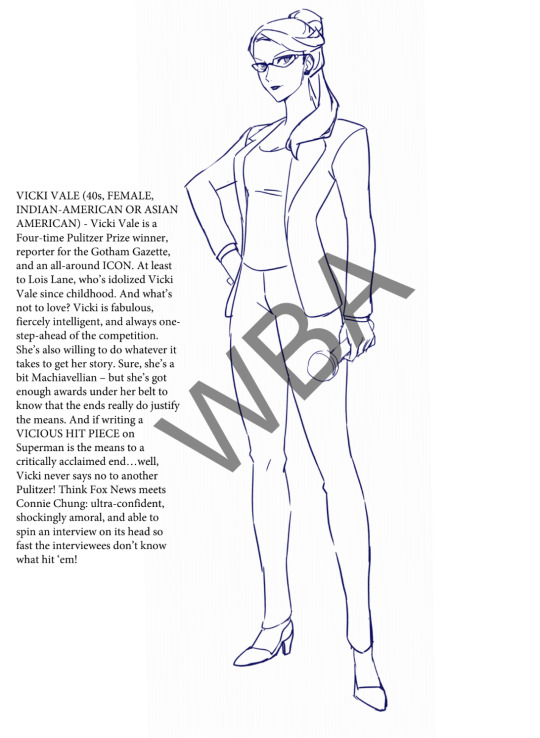
I realized the image I had attached to the "Failure of Asian Lois Lane" essay of Vicki Vale's concept art expired (because of discord shenanigans) so here it is again as its own post (and I'll update the essay's link to go to this post instead). Discussion under the cut for why I think this is distasteful and racist.
So some people don't understand what I mean when I say I consider this concept art racist. The description to Vicki Vale's character reads: "40s, FEMALE, INDIAN-AMERICAN OR ASIAN AMERICAN". When people say "Indian American or Asian American" what they're telling you is they consider Indian people a separate category from Asian people. However- Indian people ARE Asian people. Indians are grouped under South Asian people. Therefore they are Asian.
This is a common colorist idea that Asian people are only limited to light-skinned East Asians (Chinese, Japanese, and Korean people)- completely excluding South, Southeast Asian, West, and Central Asians. Here's a terrible comedy bit Ronny Chieng did for the Daily Show displaying that very colorist mindset. Notice how the description for Vicki specifies "Indian" but is vague about what "Asian" means.
I don't know if this concept art is taken out of context, and if there were multiple iterations of what Asian Vicki Vale would look like- but as far as what this image presents, this full body design that ended up making it to final is the only iteration. Are we to believe this design was meant to encompass what "Asian American" and "Indian American" Vicki Vale were supposed to look like? If they decided she was going to be Indian, were they just going to color her with dark skin and call it a day? Are Asians that interchangeable to the crew that they didn't feel the need to design more versions of her? I truly don't know. And it's still possible that this is one page out of context from several concepts. BUT this show already doesn't have a great track record for stylizing ethic features- and it hasn't stopped them from monolith-casting Asian actors for their Asian characters.

I mean look at how they ended up designing a supposed South Asian woman on the show. Livewire/ Leslie Willis is voiced by Zehra Fazal, a South Asian woman. Many people had no idea Livewire is South Asian. I mean she's got blue eyes and blonde-white bleached hair?

It doesn't help that she stood next to this character who is also dark skinned and blonde-haired- so people assumed they were related and therefore assumed Leslie was Black. It's not my place to say, but I have seen some Black critics being critical of how characters like Jimmy were stylized.
Overall this show's artistic direction is a mess when it comes to race. We can't keep looking up the characters' voice actors to get confirmation on their ethnicity (with that logic, Sam Lane is Filipino despite his daughter in-show being Korean)! The character design or story should make that clear for you. If POC representation was simply up for debate or a matter of interpretation, then you're not representing anyone at all.
This is why I think the show is simply not equipped to tackle POC representation but especially Asian characters. If this is the kind of language and art style that is normalized behind the scenes to developing Asian characters, can you see why I'd be suspicious of any future attempts at tackling "more explicit Asian representation"? I don't believe the showrunners are racist. However I wouldn't trust them with representation either.
It wasn't until I wrote that essay that I learned Vicki was "Asian". It wasn't until now as I write this post that I learned both Steve Lombard and Roughhouse are "Asian" (we'll never get specifics, naturally). I knew both characters were voiced by a Chinese actor (Vincent Tong), but I didn't think for once that that translated to the characters he was voicing.
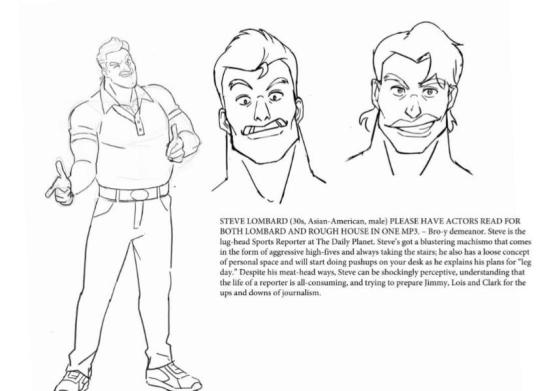

this show feels like a personal attack on me at this point. For the record, I'm not asking for Vicki, Leslie, Steve, or Roughhouse to have storylines informed by their Asian identity. If anything I consider these characters so superfluous to the plot MAWS wants to tell that these guys should be removed all together (the most frustrating of them being Vicki, who's yet another Asian American character who's explicitly xenophobic to Superman). What I am saying is that I should still be able to recognize these characters as Asian!
#ramblings#jesncin talks maws#if u want an asian lois that looks up to an asian reporter as a role model- this is your sign to read Girl Taking Over#maws concept art is that art student who wants to add “poc” in their story but can't answer you when you ask for specifics#what's Vicki's ethnicity? uuuuum Asian??? like geez wow helpful#media criticism#jesncin dc meta
42 notes
·
View notes
Note
Why do people keep drawing Apollo like an super tanned Californian serfer with bleached hair or an American with German ancestry frat boy with a spray tan? Or a dark haired man who can tan with their hair dyed blond? Have they actually seen naturally blond Mediterranean men? This is not the type of "blond" they think it is! And even in case they got that type of very light hair they don't even tan, they burn - that's mostly how blond people work, with lower levels of melanin and all.
Part 2/??: If the artists go for darker blond there might be a chance at tanning but still it won't be the natural tan they consider "good enough". Let me repeat, a naturally blond Mediterranean man's natural tan wouldn't be good for them!
A brown-golden hue would be a more realistic "blond" for the area. Take for example the Greek Stefanos Tsitsipas. (I don't think that he had his hair dyed but if that's not true, lmk)
I know his blond is not usual for most Greek men but it exists. So we don't need to make Apollo a Norse blond-haired, when these hues exist in the area. If the Norse blond is really is the only "striking gold" these people can think of, then I can't help but see some racist undertones.
It's not like white blond people with deep fake tans need representation... And when a white person tans they are still white, especially if they have blond hair. So this depiction doesn't stand even from a social justice point.
________________ end of ask _________________
I divided your ask into paragraphs for easier reading, I hope you don't mind!
It goes without saying that darker-skinned people in this country have their problems, but that's a different issue. I will also focus on white/caucasian people because with different appearances come different issues, and I understand that this ask focuses on the white/caucasian demographic which is the overwhelming majority in Greece.
Many people don't believe it but Greeks have a general insecurity about not tanning enough. Greece manages to love tans while disliking dark-skinned people AND light-skinned people at the same time.
Tanning sprays and cremes are often advertised a lot before summer starts, and in a pharmacy you see more than ten brands with different tanning properties and ingredients. Hundreds of Greek articles have been produced for "how to maintain your summer tan!" and "how to get the best tan" and "how to get X's tan". One can figure out that if a people are constantly being told how to achieve a "good tan", they probably can't achieve it naturally. E.g. nobody advises Greeks on how to be hairy because they already are 😂
When you are light-skinned you are likely to hear that you look sick (from your Greek family AND from Greek doctors), there is the implication that you are frail and weak, and people tell you that you should get a "beautiful, golden tan". Your skin is not "rich" or "golden", just a meek pasty thing. Greek TV is full of dark-haired people who are made to look blond and absolutely hairless with artificial means, to achieve what the majority of Greeks can't: The desired Blond+Tanned (in summer) combination.
People who can tan usually have darker hair and more hair in general, so they are not naturally Blond+Tanned. Lighter-haired people who can't tan because of lack of melanin are still not Blond+Tanned. Dark-haired Greeks with lighter skin are still not Blond+Tanned. So, we don't exactly have a winner here.
Note: People with dark hair and dark skin are considered beautiful too, but women sometimes hear negative comments after summer passes. BUT when you have dark hair you cannot look "too dark" because that is "undesirable" and people will think that you are a foreigner or a Roma. (Which are not bad things, but society sometimes makes them be). If you are "too dark" and then dye your hair blond you will be considered tacky and without a fashion taste. People in Greece automatically know what is conventionally pretty or not in their country but it's quite a complicated situation when one attempts to write about it.
TL;DR: Greeks don't make you feel shitty if you are blond only if you are tanned/darker-skinned, but not too tanned/darker-skinned. Greeks don't make you feel shitty if you are tanned/darker-skinned only if you are blond, but not too blond and not too tanned/darker-skinned.
So, I agree, when foreigners draw Apollo with super light hair and super dark skin they don't do a service to anyone and they don't represent anyone in our region who is insecure about their natural looks.
Also here is Tsitsipas and his glorious hair!


And here is very natural photo of him being BURNED red from the sun on his face and limbs, something not unheard of for Greeks with lighter hair (and, naturally, complexion)

58 notes
·
View notes
Text
this was originally meant to be a response/follow-up to @i-did 's post about race in the aftg fandom (that you should read). i ran it by him first and asked permission to add, but then we decided it was too long so i should make it its own post
---
i want to talk about fandom's take on the twins' race because it's rather glaring in the fandom that andrew (and then aaron by necessity) are often portrayed as the only white characters on the team and i have to question why?
there's nothing in the backstories that would mean writing them as POC would fling them headlong into offensive stereotypes that the fandom hasn't bypassed over to make another fox a POC.
they have a history of addiction? but it's okay for matt and seth to be addicts and be brown.
they're violent? but it's okay for renee to be non-white and a former gang member.
they're blond and 'pale'¹? but allison can be a WOC and bleach her hair without saying it explicitly? renee can have white rainbow hair no matter the AU? neil can be a blue-eyed redhead and still be drawn darker skinned half the time?
'pale' in and of itself is a very vague word that's only brought up in the context of comparison to notably dark skinned nicky. it's completely relative, and multi-racial families where people look wildly different from each other exist (pretty commonly). or if you're prescriptivist how about the multiple ways a POC can still be a natural blond including but not limited to pigmentation conditions or being mixed race? similarly, i think less than a quarter of the FCs i've seen for andrew over the years have been natural blonds themselves.
so if our holdups aren't about racial stereotyping and they aren't about the incredibly vague character descriptions, then why are the twins always white when it's approached as a good thing that no one else is? when i've seen multiple different posts lauding the fandom for adding diversity where nora didn't write it, except for here?
.
to be completely, bluntly honest, it's because we as a majority-white fandom are uncomfortable when we are not the central characters. or maybe we are uncomfortable when people of color ARE the central characters. i don't think there's much of a difference.
we are comfortable writing and drawing nicky, the upperclassmen, then kevin (in that order) as poc because, simply, we use them as background characters. they are rarely the main characters of fics, or have their own storylines in them; it all revolves around andreil.
.
additionally, while i've used neil up to now as an example of the fandom being OKAY with writing POC, let's also admit that it's an,, imperfect representation, as he will often be racially ambiguous with no explicit ethnicity, he will be the lightest skinned of the foxes of color, and he will still have eurocentric features. also it's genuinely a toss up as to whether he's drawn brown or not, there are still plenty of white neils, much more than there are white dans and matts and renees (not an attack on anyone who draws white neils, simply a statement) and FCs and edits of him still tend to be white people.
he's a bit of a schrödinger's person of color, not really any one thing or another, very few people being willing to take a hard stance on him and do the work of taking that decision under consideration when writing and drawing him.
(quick shout-out here to @hi-raethia for making content about an explicitly chinese interpretation of neil).
(additionally, to be as clear about my intended message as possible, this isn't a statement on the politics of passing or undermining the ethnicities of lightskinned poc, this is about a lack of detail being put into making a character a character of color in any thoughtful, meaningful, or significant way)
.
so when i talk about the centralization of white people in fandom, neil gets to be included, perhaps with a footnote indicating that this is somewhat of a more complicated statement than it is with lily-white andrew minyard.
nevertheless, i feel comfortable saying that 75% of fandom content revolves around andrew and neil, major exceptions only being jerejean which are often stand-alone from the foxes, and the rising branch of kevaaron shippers. however both of those ships are actually subject to this exact same criticism, as ships between a a flat-out white character and a dubiously "non-white" character who can also be white sometimes. it varies.
conspicuously, content about the UPPERCLASSMEN tends to revolve around andrew and neil.
fics where the upperclassmen are the pov character are often outside-perspective fics on andreil.
HC posts about the upperclassmen, especially matt, will devote major portions to his time spent helping, hanging with, and thinking about andrew and/or neil.
secondary ships like danmatt or renison tend to be just that, secondary ships moving in the background of andreil-focused works. they get more of a,,, scenic shout-out than a storyline
it is only comfortable for us to write these characters as characters of color if they revolve entirely around white characters
.
.
.
so after all that? what should we do, as a white-majority fandom? what should YOU, specifically, as a white person, do?
i hate to talk about a problem without also talking about solutions, and i try not to carp on something i don't want to be an active part of fixing. public criticism without an action plan only leads to hurt feelings and guilt, and that's never my intention when bringing this up. my goal is to address a general problem, not anyone specific's personal failings.
in all honesty leaning completely into all of the foxes being people of color, though i think neat and i certainly support, is not the best solution, and would be more of a hollow action than anything else without addressing the underlying problems that lead to the development of this dynamic.
i think the best thing to do would be to 1. do some research on writing poc, usually by following some writing-specific blogs like @writingwithcolor or @pocinmymedia . look up the 'black best friend' trope and really spend some time tjinking about it. spend an hour seeking out a random assortment of blogs that interest you that are also run by people of color. checking through tags like drawingwhileblack or blacktober may be good kickoff points.
tumblr is great because with an hour of active work to find these blogs, you can then go months passively seeing content from them. try not to interact, actually, simply watch and listen and become familiar with general trends and concerns in different communities. remember that every blog is run by an individual person, not an elected representative of their race, and always keep this in mind.
you are teaching YOURSELF that people of color are individuals, they have interests and inner lives that don't revolve around whiteness, that don't revolve around YOU
at the same time, 2. challenge yourself as a creator to make more content about the upperclassmen, specifically. make art about them doing stuff as a group separate from neil and andrew's group. find a compilation of 'draw the squad' memes and draw/tag the upperclassmen only. make jokes where they talk to each other. write some meta about their character motivations. write a fic where andreil isn't even mentioned, it can be super short, you can even use a prompt generator.
as a reader, reread their backstories in the extra content. reread son nefes. use ao3's filtering system to read some fics about JUST the upperclassmen, few and far apart though they may be.
if we've decided that the upperclassmen are people of color then lean into that, and learn to CARE about them on their own merit, because they are the most underutilized characters in the fandom. we need to make content centralized around them to combat the fact that fandom centralizes whiteness
100 notes
·
View notes
Photo

“Society’s Glitch” by @its.moofasa on Instagram 🖤 Acrylic on canvas
Feb. 2019 “I decided to name this painting “Society’s Glitch” as it reflects upon the African-American woman’s experience, specifically those who have darker skin.
African Americans and black people around the world fear of persecution on the daily for being noticed and at the same time they don’t feel noticed enough in regards to proper self representation.” “It was historically preferential to have chosen a lighter skin or even a mixed heritage black woman to represent all black women in the media. Therefore establishing a beauty standard that did not include natural curly/kinky hair textures or a darker skin color. The natural black woman was labeled as “too distracting” or “ghetto” for no intelligible reason. So then attempting to blend in with the straight blonde wig, blue eye contacts, and skin bleaching, the dark skinned black woman was labeled as “crazy” or “white washed”. Hated for being herself and hated for trying to blend in, society has for the longest demonstrated its frustration with her existence, unknowledgeable on what to do with her, they’d just prefer to ignore her and pretend as though she doesn’t exist. Out of sight, out of mind.” “That is why I’ve decided to pixelate her entire image because we can make out what she is from afar but you cannot see who she is. So you get up close and personal, then you realize you actually don’t really see her at all anymore. Once you realize the complexity of the blocks that made her, you reveal the stunning effort of artistic presence. Just as the dark skinned black woman was/is in the representative media today.” Dear melanated woman, you are art 🖤🖤🖤 #SupportBlackArt #itsmoofasa https://www.instagram.com/p/CKew0ighmN9/?igshid=xxiesiuov05g
#supportblackart#itsmoofasa#society#glitch#pixel#representationmatters#blackwomenmatter#darkskin#blackisbeautiful#blackisbeauty#melanin#brownskingirls#blackgirlsaremagic#acrylicpaintingoncanvas#doublemeaning#blackfemaleartist#melaninart#blackwomenart#art#artist#painting#blackartists#dopeblackart#artdaily#artdailypage
34 notes
·
View notes
Note
A buzzcut is a haircut. That could be done very easily. Either the strilondes have naturally blonde hair or they like it so much they all consistently bleach their hair for decades without ever changing it. Dirk’s hair could be put in a man bun if it isn’t gelled. Rose’s could be shaved. Those are quick and possible changes but them having brown hair doesn’t make much sense at all.
i like how ur trying to argue with someone who like idk just wants some representation lol. maybe i just want the strilondes to have black hair. fuck you
13 notes
·
View notes
Note
Hi! I have a question I really hope you can help me with, I have a black character in a futuristic military and I have no idea what hairstyle would be good for her. She spends a lot of time under water, wearing a helmet, or doing hard exercise. Also, if I had her woken up suddenly would she be wearing any kind of night cap, if not how can I describe her hair and do it right
Black Hair in the Military

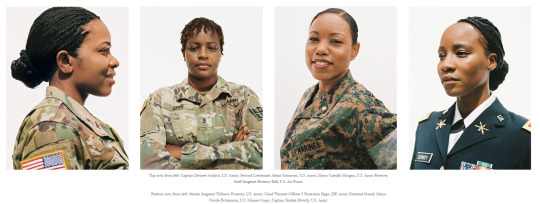
[Image of Black servicewomen: source]
Your best bet for a military setting would be a protective natural hair style. From Short-term buns, twists or braids to long-term braided styles or locs – For someone in training or active battle, styles that lay relatively flat, can be pulled down and back, won’t catch or snag, and stay out of the way would be ideal.
Military Hairstyle Considerations
Bun
Ponytail
Twists
Braids
Cornrows
Dreadlocks / locs
Hair kept short or shaven
Military Hairstyle Issues to consider
Straightened
I have seen Black military women and people with straightened hair. They likely have more access to hair maintenance depending on unit or assignment, or must use their free time to maintain the styles. There are salons on some bases, and some seek local salons depending on their station. Wet and sweat-drenched hair would want to revert back to its curly state, though, so having access to hair straightening methods to maintain the style is essential.
Major Tennille Woods Scott, U.S. Army [X]
Woods Scott has adapted her beauty regime under some pretty adverse conditions during her 12 years of military service. “In Iraq, I would relax my own hair every eight weeks, which was quite dangerous,” says Woods Scott, who served in the region in 2007 and 2008. “In the hour or so that it took, I was nervous, thinking, What if a rocket or mortar comes in?”
Hair Products
Your character might use local resources in the town they’re stationed and / or those that are on base to care for their hair. What they were initially allowed to bring may vary. If nothing local fits their hair needs, they might go towards natural resources that are generally more universal (coconut oil, shea)
[See: Caring for natural (curly) hair in a setting with no access to modern hair products]
Hair Regulations
For a time, the U.S. army banned many black hairstyles that are easiest to maintain and called them “unkempt.” Many Black people, especially women, struggled under these strict policies, including wearing wigs under their helmets to comply.
The ban has been loosened in many areas, although there are still regulations regarding length and keeping hair “well-groomed and neat.”
Sources and Articles:
US Army PDF: Wear and Appearance of Army Uniforms and Insignia
The Navy Just Gave Women the Okay to Wear Locs, Ponytails, and Topknots
The U.S. Navy Finally Lifts Its Ban On Women Wearing Locs
Night Care
As for the nightcap, I cannot see why your character wouldn’t be able to wear one. A scarf and bonnet come on and off easily (Too easy…they often fall off in the middle of the night!) so it wouldn’t hold her up if she had to suddenly get up and go. Wrapping straightened hair is a common technique too.
Applying this to your futuristic military setting
Examine those rules (both the initial strict and the current regulations). See how Black people feel and felt about them, and consider how you would like to address this in your future military setting.
Could you fix these rules for the better or might it get worse? Your world building should determine if it would be an issue or not. It doesn’t need to be if you don’t want it to.
Featuring at least a few sentences here and there describing their hairstyle of choice, and a few maintenance activities would add realism and representation.
EX: Re-doing her braids during a slow day at the base, or waking up early to do so. Wearing a sleep bonnet; maybe she gets playfully teased by others for wearing a big, cheesy colorful bonnet. A lot of people who don’t know what they are think they’re shower caps.
Hair Stories from Black Servicewomen
I’d like to include a story from this vogue article:
A trailblazing generation of black military servicewomen is embracing the natural hair movement.
Black Women in the U.S. military talk about their natural hairstyle of choice and military service. 17 Images included. I’m only including one here so read the full article. It’s a brilliant resource!

Lieutenant Colonel Junel Jeffrey, U.S. Army
Jeffrey is the kind of risk-taking, chameleonic beauty who’ll turn a disastrous hair misadventure into an opportunity for total and complete reinvention.
The public affairs officer had no qualms about cutting off her long, chemically straightened hair after an abrasive relaxer treatment at a salon on her Army base in Germany caused extensive thinning. She now experiments with new, head-turning styles even under the most challenging circumstances, tracking down a natural hair whiz in Afghanistan to twist her curls. And when a $5 haircut at a barbershop in the Congo left her with what she describes as an Afro “shaped like a microphone,” she laughed off the jokes made by her comrades, cropping her hair close and bleaching it peroxide blonde.
“The recent change in regulations has given me more options,” she says. “It also says a lot about how the Army feels about inclusion. I feel like now it’s okay to be me.”
Disclaimer: I’m a Black American woman with no direct military experience. Those who do have this experience, or have a non-American experience as well, feel free to chime in.
~Mod Colette
Commentary
@itsthemagistra said:
I’m glad much has changed since I was in the military. I wasn’t allowed to have braids/twists but had no access to natural hair care products through training. Needless to say, I was constantly “out of regs” and getting written up for “faddish hair styles”. The worst part is that such judgments were case by case, meaning that it all depended on the point of view of the particular cadre member that happened to see me. Great fun, 10/10 experience.
@the-geek-cornucopia
I love youtuber Jackie Aina and she’s ex military so I think she did a video about black women and hair in the military. Military Hair and Makeup Tutorial
#beks-crooked-glasses#Black#black hair#military#discrimination#racism#afro hair#writing#fantasy#settings#Black women#asks#articles#writer resources
1K notes
·
View notes
Text
Another set of recent weird dreams.
The night of November 19th, I had this dream that I was at what I believe was a store in the mall. While there, I was reunited with this boy who I went to elementary and middle school with. Neither of us really were friends, just people in the same grade who knew each other, but I remember he was this troublemaker. One of those kids who look far too big to be in the grade they’re in, with like a red face and such pale blonde hair you’d think he bleached it himself (it was natural). He was, as I remember him, a jock. The type of person who wore those basketball jerseys to school. He was popular, and in middle school language arts class he would put his feet on the textbook tray under my seat and it pissed me off to no damn end. But anyways, I haven’t thought of this guy in ages (nor did I ever really care to) but here he was sauntering into my dream. I don’t remember how the altercation started but there was an altercation and before I know it, I’m on the ground just punching the fuck out of him in the middle of, like, Spencer’s. And the weirdest thing is that he didn’t even fucking fight it. Nobody really fought it. I think my boyfriend may have said something about me stopping in the background, but nobody tried to tear me off of him or anything. They just let me totally pummel him into the ground until he was bloody and my hands were bruised. And even though this was a dream, I could physically feel my own self putting every ounce of effort into this fight, just mustering every little bit of strength to completely obliterate this guy. I don’t know what he did to deserve a beating of that magnitude but idk, maybe it was just a harsh representation of beating down the demons from my past. I did start eating disorder treatment that very same day so maybe that was just the physical manifestation of my disease and me just totally killing the damn thing, I don’t know.
Last night (the night of November 20th), I had a couple really strange dreams that I guess are more like vignettes than actual dreams.
The first was that I was standing in front of a mirror applying makeup to turn myself into Audrey Hepburn.
The second was that I was clearing away things on an end table to find a carton of strawberries that never got put in the fridge. Instead, they just stayed there and let things pile up on top of them, and my immediate reaction was “OH SHIT I DIDN’T KNOW WE HAD STRAWBERRIES?!” like I was happy but then also concerned because I had no idea how long they had been out for and expected them to have gotten rotten and moldy and yet they were perfectly fine? Like the reddest, most beautifully juicy strawberries you could ever imagine, almost totally unreal.
The third and last was that I was in Photoshop putting together a really crappy looking montage of photos of emo/scene hair in different colors, in a rainbow progression, and I was having a really hard time with the blue hair one. I don’t know, it was like I was running out of space to give each picture equal room and the blue haired one just wasn’t cooperating or something. For some reason, now that I think about it, I keep thinking that there was some underlying tone of being on a city bus, as well? Though there is absolutely no reason for me to have been on my laptop in Photoshop while on a city bus but, you know, whatever? I was kind of lucid in this one, though, because this was mid-morning when my alarms had started going off and I was started to drift in and out of sleep.
1 note
·
View note
Photo
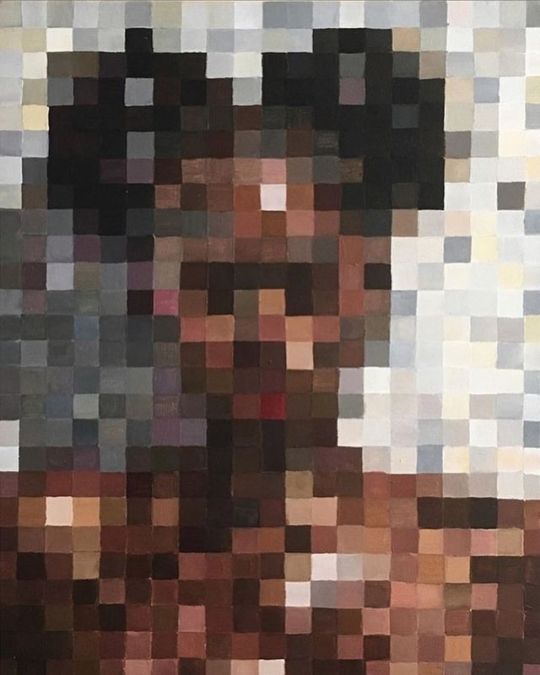
#Repost @imoofasa_thanyou ・・・ “Society’s Glitch” | acrylic on canvas | Feb. 2019 I decided to name this painting “Society’s Glitch” as it reflects upon the #AfricanAmerican woman’s experience, specifically those who have darker skin. African Americans and black people around the world fear of persecution on the daily for being noticed and at the same time they don’t feel noticed enough in regards to proper self representation. • • It was historically preferential to have chosen a lighter skin or even a mixed heritage black woman to represent all black women in the media. Therefore establishing a beauty standard that did not include natural curly/kinky hair textures or a darker skin color. The natural black woman was labeled as “too distracting” or “ghetto” for no intelligible reason. So then attempting to blend in with the straight blonde wig, blue eye contacts, and skin bleaching, the dark skinned black woman was labeled as “crazy” or “white washed”. Hated for being herself and hated for trying to blend in, society has for the longest demonstrated its frustration with her existence, unknowledgeable on what to do with her, they’d just prefer to ignore her and pretend as though she doesn’t exist. Out of sight, out of mind. • • That is why I’ve decided to pixelate her entire image because we can make out what she is from afar but you cannot see who she is. So you get up close and personal, then you realize you actually don’t really see her at all anymore. You see the hand painted pixels, and you debate if it’s flawed or intentional but overall once you realize the complexity of the blocks that made her, you reveal the stunning effort of artistic presence. Just as the dark skinned black woman was/is in the representative media today. Dear melanated woman, you are art 🖤🖤🖤 #WCW #oilpainting #acrylicpainting #doublemeaning #blackart #blackfemaleartist #paintingoftheday #kinkyhairstyles #blackactresses #watercolor_daily #dopeblackart #mixedgirlproblems #dopeblackart #watercolorartist #oilpaints #acrylics #oilart #blackartistspace #painting #figurepainting #practicepainting #onwednesdayswepaint https://www.instagram.com/p/B1Jpd-Vl9Fu/?igshid=nzczi2a4yzuw
#repost#africanamerican#wcw#oilpainting#acrylicpainting#doublemeaning#blackart#blackfemaleartist#paintingoftheday#kinkyhairstyles#blackactresses#watercolor_daily#dopeblackart#mixedgirlproblems#watercolorartist#oilpaints#acrylics#oilart#blackartistspace#painting#figurepainting#practicepainting#onwednesdayswepaint
1 note
·
View note
Text
Identity Crisis: I am Michael

I am Michael attempts to tell the true story of Michael Glatze, a former LGBTQ activist and author, who denounces his homosexuality to embrace religion, announces his heterosexuality, and ultimately becomes an evangelical church pastor. While the film is ambitious in it’s attempt to tap into larger conversations about issues of queer identity and acceptance, rooted in homophobia and heteronormativity, instead of confronting these problematic areas, I am Michael arguably only poses new questions. The film simultaneously fails to provide a contextual framing or social commentary, and lacks the nuance of queer lives and experience. This film review considers some of the problematic representations in I am Michael, and argues that it’s most successful aspect of is the way in which it functions as a transmedia object, and creates new meanings as part of a larger queer history.
Identity and identity politics, and the issue of acceptance, are the key themes present in I am Michael. Andersson writes that identity is constructed through “points of identification,” and may be thought of as a “production,” rather than “‘an already accomplished fact,’” which is “‘always in process and always constituted within, not outside, representation’”(Andersson, 2002). Yet, instead identification is often constructed through “classificatory systems,” and “this classifying is done through the use of binary oppositions”(Andersson, 2002).
The representation of sexual identity as binary, that is homosexual and heterosexual, is evident in the juxtaposition presented in the opening scenes of the film. The opening scene may be describes as jarring. A clean-cut James Franco, who hardly resembles himself (as the actor) sits with a young man, probably a teenager. Michael (Franco) begins with “Hi. I’m Michael,” and explains that there is no such thing as “gay,” because it is “a false identity.” The screen abruptly fades to black, and the text “Ten Years Earlier, San Francisco,” flashes the viewer back in time. These abrupt transitions function to punctuate the film throughout, and conceptually or symbolically visualize the fragmented, compartmentalized nature of Michael’s life and identities. Establishing shots of the Castro district, bustling with life, starkly juxtapose the sterility of the opening scene. This contrast is evidenced when a bleach-blonde, long-haired Michael is seen waking up, naked, in bed with his boyfriend, Bennett. The audience is now aware that this visual image represent Michael’s gay identity. A binary of representation, that is heterosexual and homosexual, is created within the first five minutes of the film.


The film revolves around the character of Michael, and traces the majority of his relationship with Bennett (and their third live-in boyfriend, Tyler), that coincides with Michael’s spiral into mental illness and then religion, that ultimately leads to his announcement of himself as “ex-gay.” Using a mixture of voice-over narration, the action of the film centers around Michael’s journey, as first an activist and author who worked as an editor of two gay magazines, XY and YGA, then travelling across the country to interview LGBTQ youth for the documentary, Jim in Bold. It is on this journey, that Michael encounters a student on a college campus who identifies himself as gay and a christian. Here, the film changes in tone, Michael is contemplative, quiet, moody; several scenes show him looking up at the sky into the light, and trees. Michael, dealing with the grief of losing both of his parents at a young age, is obsessed with the notion of seeing his parents again in heaven, everlasting life. He begins ingesting religious material, the bible, evangelical tracts, websites, etc. When Bennett questions, even laughs at this content, Michael defends and justifies his new faith, and becomes angry. Grief coupled with mental illness is a prominent factor in this story, and the film shows Michael’s actions to be motivated because of confusion and magical thinking mixed with religious dogma/ideology his is discovering. He descends into a dark place, isolating himself, and the film appears to visually represent the untreated mental illness, along with the internalized homophobia and self-loathing, that informed Michael’s experience at this time. His condition culminates when he imagines a hypochondrial health scenario: he is convinced that he has the heart disease that killed his father. After receiving test results from a specialist that confirmed he is healthy, Michael no longer believes he is dying. He says, “Thank you God,” and believes this miraculous news to be a sign, and buys a Bible. Michael is further introduced to religion after being invited to a Latter Day Saints (LDS) church service. Then, Michael writes the infamous blog where he says, “I no longer identify as gay.” Around this time, he leaves his boyfriend(s), and becomes involved with a Buddhist community, introduced by a man named Nico, who tries to help Michael with meditation, and Buddhist principles. Nico and Michael become lovers, even as Michael is hypocritically spouting homophobic and hateful (not to mention, dishonest!) rhetoric in online forums and interviews. He is asked to leave the Buddhist community, and here Michael’s beliefs evolve to an even further extreme, as he begins to believe that in order to be with his mother and father in heaven, he therefore cannot be gay. Michael’s voice over explains that he was a “Heterosexual person with a homosexual problem.” In the last part of the film, we see Michael become even more extreme, and move to Wyoming to attend an a bible college. Visually, his character resembles the clean-cut “heterosexual” representation of Michael from the beginning of the film. Here he meets his wife, Rebecca, and together, they identify and push-back on the fear-mongering directives being taught. In the final scene, we see a church building exterior, with a sign that says “Welcome Pastor Michael Glatze.” Michael plays piano, and Rebecca (now his wife) sits beside him on the piano bench, overlooking the empty pews. Few dialogue is spoken until she tells him, “they’re coming,” and the congregation is heard entering the building. The congregation is never seen by the audience however, as the final moments of the film cut back and forth to tight shots of Michael and Rebecca's faces. The audience sees Michael, at first smiling and confident, suddenly appear deflated, depressed, ashamed, afraid; Rebecca is staring intently at him, and seems to finally realize who Michael really is, a “true” identity. Finally, Michael’s brow becomes furrowed, he is downcast, and begins breathing heavily, and clutching his heart...as he did before the “miracle” test results. The screen abruptly fades to black for the last time, and as the credits begin to roll, the audience is left wondering, how much of Michael’s journey was the result of mental illness, and not about “conversion,” religion, or sexuality and identity, at all?

Problematic Representation
While this film perpetuates a range of potentially problematic representations of queer experience, the lack of nuance is especially significant. This story is complex, and deals with huge issues of mental illness that are largely unnamed in the film. It is also arguably dangerous, as the lack of framing, social context and significance makes the film a borderline promotion of gay conversion and the ex-gay movement).
A critical portion of the plot of this film revolves around acceptance. As Michael’s character changes, it becomes clear that he not only desperately needs acceptance from his sister, Nico, and his new religion (maybe even his ex-boyfriend), but ultimately he needs acceptance from (his conception of) god. No other acceptance is good enough or will do, because Michael needs divine acceptance. Walters explores acceptance as an exclusionary trope while critically analysing the liberal concept of tolerance as a practice, and identifies acceptance as, “the handmaiden of tolerance” (Walters, 2015). Walters argues that tolerance and acceptance are “...both inadequate and even dangerous modes for accessing real social inclusion and change...the ‘accept us’ agenda shows up both in everyday forms of popular culture and in the broader national discourse on rights and belonging...accept us because we’re just like you; accept us because we’re all God’s children....accept us because then you can save us from our own self-hatred and vanquish homophobia in the process” (Walters, 2015). This obsession with acceptance, arguably an internalization of homophobia and self-loathing, manifests in a scene where Michael is seen repeatedly reciting and memorizing a passage from the Book of Mormon: “...prove what is the good, acceptable and perfect will of god.”
I am Michael also presents the protagonist's gayness as a personal problem or issue to be overcome. Dow describes the representation of such queer television and film characters who “...are never ‘incidentally’ gay; they appeared in episodes or movies in which their sexuality was ‘the problem’ to be solved” (Dow, 2001). Additionally, while the story begins with Michael represented as a political activist, the story becomes strictly personal, as the political context and consequences of his public ‘coming out’ as heterosexual, are largely omitted from the film. This is what Dow calls the “personalizing of sexuality,” wherein a “neat turning of the potentially political into the personal” (Dow, 2001).
While I am Michael avoids the stereotypical trope of sexlessness and shows representations of sexual encounters, the film may overcompensate, and create new stereotypes, as it represents gay men as polyamorous and somewhat promiscuous. Additionally, while I am Michael was not a mainstream commercial or critical success, while other films that have been called “sexless” (such as Moonlight) have received critical acclaim and Academy Awards. Lodge argues that Moonlight’s representation of “a gay romance with non on-screen sexual activity beyond an unseen handjob,” is the reason it was “rewarded with major releases and prominent publicity” (Lodge, 2017). This leads the viewer to question, does the omission of the representation of gay sexuality equal a successful mainstream queer film? Was I am Michael less commercially/critically successful because it showed sexual encounters?

Critique
Queer film study is defined as the exploration and cultural analysis of queer film in the tradition of queer theory, that “posits sexuality is a vast and complex terrain that encompasses not just personal orientation and/or behavior, but also the social, cultural, and historical factors that define and create the conditions for such orientations and behaviors. As such, queer theory rejects essentialist or biological notions of gender and sexuality, and sees them instead as fluid and socially constructed positionalities...”(Benshoff and Griffin, 2004). The representation of sexuality in I am Michael is also problematic, because it both keeps and breaks with the trajectory of Queer cinema. On one hand, the film continues with this tradition that “often questions essentialist models of sexual identity, and frequently shows how the terms ‘gay’ and ‘lesbian’ are inadequate when trying to define actual human experience,” by presenting a journey that could be interpreted as sexual fluidity (Benshoff and Griffin, 2004). On the other hand, this film does not “explore sexuality in relation to gender, race, class, age, etc.--in order to show how other discourses of social difference inflect our understanding of sexuality” (Benshoff and Griffin, 2004). That is, I am Michael suffers from an ideology of whiteness, and ignores matters of gender altogether. How would Michael’s journey have been different if he was not a white male? Does his agency, or ability to move between hetero and homosexual communities reveal inherent privilege? In this regard, can I am Michael even be called a queer film?
Finally, while the queer representation in this film is disappointing, I argue that I am Michael functions successfully as a transmedia object, wherein the representation of queer identities is more realistic and intersectional. Transmedia objects may be defined as themselves cultural texts, “supplemented with other media,” and “remediating and spreading consumable texts across media platforms” (Marwick et. al, 2014) This distinctive practice that “invites different opportunities for identification and communication with present and distant others,” is evidenced in the short documentary film, Michael Lost and Found, a poignant response to the feature film by the real-life characters (Marwick et. al, 2014). Additionally, the documentary represented in the film, Jim in Bold, presents a rich representation of the non-homogenous nature of the queer community, and features intersectional identities including queer women, and queer persons of color. While the story depicted in the film occurred largely without the presence of the internet, Michael’s infamous blog and online interviews, the XY Survival Guide, along with back issues of YGA and XY magazines (available for purchase on E-Bay), function across multiple platforms. The additional real-life media implied and represented in the film, and occurring before and in response to its release is also arguably more entertaining, and has significance to queer history.





As a queer scholar, feminist, and lesbian, my cynicism about the whiteness and maleness of this queer film, is obviously related to my own subject position. However, I think it is also important to understand this story in time, connected to my own subject position. Similar to Michael, myself, and friends slightly older, belong to a generation on the cusp of Generation Y and Millennials, what I will call, The Matthew Shepard Generation. This pre-millennial, or older cusp had a different experience than youth today. While we did not have to deal with the decades of oppression that preceded us, it was understood that we lived in a time and place (especially in rural small towns) wherein it was not acceptable to be openly gay. In a scene in the film, Michael is driving around the streets of his hometown of Olympia, Washington. He remarks how strange it is to be back in this place, where he “wasn’t gay,” explaining, “I couldn’t be gay here.” I definitely related to this portion of the film. As the middle sibling between the queer activism of the late 60s into the 80s and 90s, and our contemporary queer culture, this transitional time period around the turn of the century, featured in many of the biographical narratives/interviews in the documentary, Jim in Bold, are important to queer history. Through this negotiated queer reading, I am Michael has the potential to create new meaning, across multiple platforms, as a transmedia object.
***As a side note: queer appropriation has become a problematic pattern for actor, James Franco. As an undergraduate, I wrote about Franco’s personal appropriation of queer and drag culture, in an Art and Gender course. While this issue is not included in this discussion, this is an interesting topic for further consideration.
Bibliography
Andersson, Y. (2002). “Queer Media?: Or; What Has Queer Theory to do with Media Studies?” IAMCR, 1-10.
Benshoff, H. and Griffin, S. (2004). “Introduction.” Queer Cinema, The Film Reader. NY and London: Routledge.
Dow, B. (2001). Ellen, Television, and the politics of Gay and Lesbian Visibility. Critical Studies in Media Communication, 18:2, 123-140.
Lodge, G. (2016). “Does Moonlight show gay cinema has to be sexless to succeed?” The Guardian. https://www.theguardian.com/film/2017/jan/05/does-moonlight-prove-that-gay-cinema-has-to-be-sexless-to-succeed.
Marwick, A., Gray, M. L. & Ananny, M. (2014). “‘Dolphins Are Just Gay Sharks’: Glee and the Queer Case of Transmedia as Text and Object.” Television & New Media 15(7), 627–647.
Walters, S. D. (2014) “Introduction: That’s so Gay! (Or is it!?)” in The Tolerance Trap: How God, Genes, and Good Intentions are Sabotaging Gay Equality. NY: NYU Press.
11 notes
·
View notes
Text
this is a good post and will hopefully be used as a fandom resource. i do have a few notes, though. mostly from my experiences as a Chinese-American, that can hopefully help people writing these characters
He also lived in/near Vancouver, a city with a large Chinese population. How could he not know!??
My mom lived in Taiwan until she was six and still lost all the Mandarin she knew because her parents decided not to speak it at home (to help her pick up English faster). The fact that she’s spent most of the rest of her life in places with a large Chinese population (the Bay Area and Los Angeles) and attended a high school with a high % of Chinese students didn’t magically restore her Mandarin; you either speak it at home or you don’t.
the real question is why Emily wouldn’t teach her son Mandarin? maybe she didn’t speak Mandarin growing up and understands it better than she speaks it? idk
(also I hate that in MoA Frank can suddenly read Chinese, not being able to speak your “home” language is tough and I liked having that representation)
Some Chinese people are very superstitious, but for someone who was primarily raised in Western and not Chinese culture, that is just… weird. Contradicts previous characterization.
I actually think this is another “why did you make Frank only have six weeks of experience in the legion, Rick” thing. Camp Jupiter is incredibly superstitious, and often right to be, so it’s natural that it would make Frank more superstitious. Piper is another character who explicitly starts caring more about Cherokee mythology after learning that Greek mythology is real, and I think that’s what Rick was going for with that line.
where I live, where ethnic Chinese people make up over 90% of the population, dating before university is frowned upon, because it takes time away from studying (education is highly valued in the Sinosphere)
Asian American teenagers date as much as other American teenagers, even Chinese Americans who grow up mostly among other Chinese Americans. Also, dating wouldn’t take away from studying for Frank because Frank never goes back to school after joining the legion.
Many of us do not dye our hair, or not to her extent. Hair dye is sometimes used to lighten our dark hair to brown or reddish brown, or is used to hide greying hair from ageing; and hair dye is already frowned upon in Chinese culture by some because it “damages” the body given to us by our parents
not a thing among most younger Asian Americans, and even many older ones. I had blue hair for a long time and my mother didn’t care. The current trend I see is East Asian people dying their hair blonde, presumably because it’s obviously unnatural but easier to maintain hair that’s just bleached rather than bleached then colored.
Makeup: It is not to say that the use of cosmetics is discouraged in modern China, since many skin-lightening products are sold (pale skin symbolizes being rich enough to not toil in the fields and get a tan, back in the old days), but makeup is usually to look natural and subtle and not be say, a clown. Seeing a likely East Asian girl with golden makeup is definitely a tad jarring, to say the least.
Chinese Americans tend to ascribe to American ideas about how much/what kind of makeup to wear. And for younger people, skin-lightening is again less of a thing. We share a country with Ariana Grande and it rubs off.
I don’t think K-pop gained traction in HK or the world in general before 2012 (Gangnam Style), and ToA presumably took place in 2011
The books take place in the ambiguous “present day”, moving forward in time with us rather than internally. Still weird that she dresses like one, since American k-pop stans don’t... do... that but it’s not a timeline issue.
The little we know about her is that she’s a daughter of Hermes who enjoys pranking. Yeah, that might subvert traditional Japanese values, which places emphasis on hard work and persistence, and I am not sure if it is Rick’s place or mine to break the party up. [I do not speak for Japan, and I am 100% not sure how accurate this is for Japan, but here in HK, we aren’t big on pranking.]
Pranking is much less of a thing in the US than you would think from the media we produce. Alice is a child of Hermes who has picked things up from her siblings. Note she’s at the camp during the winter, so she’s a year-rounder. The culture of Camp Half-blood is going to have influenced her as much as being in the Japanese diaspora.
It’s like queerbaiting but with racism instead of homophobia
it’s not though? Rick gives background characters diverse names because the world is a diverse names, but not going into depth about the culture of background characters is... normal. do you spend time wondering about the culture of Lou-Ellen Blackstone or Damien White just because it isn’t mentioned? (I mean, okay, I do because I am a minor character person in my soul, but it’s not weird to not include that stuff! In the fic I am writing I have a lot of minor OCs to fill out the ranks because we don’t have enough characters outside of Camp Half-blood and I use a similar style to make it clear that Camp Jupier is a diverse place.)
RR CRIT: East Asian Representation
I'm not sure whether or not this is the right time to jump on the bandwagon of RR Crit when there is already so much being debated, but as an East Asian, I have definitely noticed several things this fandom and Rick might have got a little off or wrong about our cultures, or just portrayed them in a negative light which may fall into stereotypes. Please note that this list may not cover every single point worthy of criticism regarding the East Asian characters of PJO/HoO/ToA.
Note: I live in Hong Kong and am ethnically, culturally and nationally Chinese. The Japanese aspect of this post may not be 100% accurate and I rely on my limited knowledge and TV Tropes on this part. I also rely on the Traditional Chinese translation to help me.
Chinese
FRANK ZHANG
The renditioning of his Chinese name is incorrect. In SoN, his grandmother calls him “Fai Zhang”, which is incorrect on several different levels.
The name order: Chinese names are presented as surname first, given name last, not the Western order. Japanese names are also rendered this way in Japanese (but in Western order in Western media), Korean names are rendered the same way, and even Hungarian names are like this. Dude had one job and couldn't even do it right.
The romanization method: Zhang is obviously a pinyin/post-PRC takeover rendition of 張/张, while Fai is likely to be in either Wade-Giles or isn't Mandarin Chinese altogether - I suspect Cantonese, which I made a theory for. The “different romanized topolects in one name” thing is not unheard of in Hong Kong, where I've seen “Mando-surname, Canto-given-name” combinations (disregarding the form of Mandarin romanization used - I've seen both pinyin and Wade-Giles), but it most certainly is uncommon. I can get more into this later per request - send in an ask and I'll give all the legal name combinations for romanization in Hong Kong that I've seen.
It is more of a consistency issue than anything, but in-universe, Frank apparently didn't know how to read Chinese more than his own name. With a grandmother like his, how did he go over fifteen years without learning to read Chinese? He also lived in/near Vancouver, a city with a large Chinese population. How could he not know!?? And within two weeks, he somehow knew enough Chinese to read off a tourist Google Maps in Rome. How did he teach himself to read Chinese, a difficult language for Westerners to master, within two weeks? Even if many foreign names are transliterated into pinyin in Chinese, he would have to recognize the characters used in the transliteration, know the pinyin for the words, be able to transliterate the name, then guess the Western name of the place, all without the use of a computer? That's not possible if you're a newbie to any form of Chinese, in spite of what I wrote in Remembrance (my fanfic).
The “Amazhang” Pun: This is more of a fandom issue than anything, since it's never used in canon. The “a” in Zhang sounds more like a non-rhotic “ar”, and the “zh” is like a nasal “j” sound with rolling tongue. Whenever I see that pun, I have to force myself to say it in the Western pronunciation to get the pun - it's more of a pet peeve than anything, but still.
Why is he so underrated? Once again, a fandom thing. Why is he the least popular out of the Seven in the fandom? I'm not sure if racism has anything to do with this or not, but my point stands. Why is he so underrated in the fandom? But then again, he is underrated in canon too, sometimes the inadvertent butt of jokes and gags. Dude, uncool.
The whole Love Triangle From Hell thing… still not cool.
The “Ghost Month” thing: I as a city person… don't care about the Ghost Month as much, and neither do much of my family, and we are “Westernized” Chinese people at that. The quote “Tell me it's a coincidence we're searching for the Doors or Death during the ghost month” (HoH Ch10) seems a tad ooc and superstitious. Some Chinese people are very superstitious, but for someone who was primarily raised in Western and not Chinese culture, that is just… weird. Contradicts previous characterization. Dude can't even stick to one characterization, even if it's a shitty characterization. And ANOTHER point regarding the “ghost month” is that it refers to the seventh month on the LUNAR calendar (Western calendar - starts in mid to late July or even August), not July (Gregorian calendar). Specifically in 2010, the so-called Ghost Month wouldn't start until 12 July because that's the first day of the seventh lunar month, but the conversation where they talked about the Ghost Month took place on 5 July. Gods, I thought being raised in a place with such a large Chinese diaspora would have taught you the difference between the two calendars. At least the celebration of Tuen Ng Festival, aka Dragon Boat Festival needn't be brought up in canon as it took place days before SoN began, instead of during the bulk of the plot, or I'd have to register another complaint.
(taken from the post of @queenangst) His arc: The bigger part of his HoO arc is becoming more confident, yes, but it also involves getting pretty buff and tall. (Personal jealousy because I am also Chinese and am very, very short - maybe it's the northern genes? Northerners are taller than southerners, but Frank would be tall even for a northerner…) Slight fatphobic implications here because he basically “lost his fat” to become buff so as to get his character development (physically). I don't deny his character got some development, but the way it was physically represented is kind of fatphobic AND unnecessary.
(taken from the post of @housemartius, specifically from the reply of @pipersgay) Descriptions: “Baby man” and “panda”… yeah, that's not very nice in hindsight. And I'm quite sure 16yo Chinese folks wouldn't have much of a baby face, especially when they're raised in a healthy environment where their growth wouldn't be stunted by poor nutrition and therefore puberty would start earlier. The best canon-compliant explanation would be that he's a late bloomer, but I don't think late bloomers mean THIS late in most cases (taken from the post of @lesbiansism). Also, Rick… sumo wrestlers are Japanese, not Chinese. Stop promoting Interchangeable Asian Cultures.
(taken from the post of @housemartius, specifically from the reply of @alfie167) Despite having Western relatives, he has little to no on-page interaction with them in BoO - everything takes place off-page and honestly, it would have been interesting to see their interaction, because family really matters to the Chinese.
His lack of dyslexia: Yeah, it's cool to know it is possible that some demigods don't have dyslexia, but he is East Asian… maybe you should have picked a different and/or another demigod of a different ethnicity to play this part (as well). Also, in case you are wondering, East Asian kids can get learning disabilities too and in Hong Kong, kids with dyslexia receive some forms of support like more time to finish their exams and printing assessments and maybe assignments in larger font for easier reading, or so I vaguely recall.
Being raised more Western: Chinese people, especially in the diaspora, are pretty proud of their heritage overall. And Vancouver, a city where Frank and his family live in/near, houses a large part of the Chinese Canadian diaspora. Dude was basically raised in Chinese culture and/or multicultural society and hardly talk about it. How Frank managed to not go 16 years without much regard for all of THAT Chinese culture exposure and not mention it before MoA (starting with the Chinese handcuffs thing), I have no idea. Dammit, Rick, you did something similar with Piper, so no wonder you messed up here.
GRANDMOTHER ZHANG
The lady interchangeably uses Mandarin and Cantonese. She seems to mostly use Mandarin, but there was one point in SoN where she calls Juno a gwai po, which is an explicitly Cantonese way of derogatorily referring to a white woman who is middle-aged or older. How the lady came to know Cantonese, a southern topolect, when her ancestors are from Gansu, a northern province where residents speak Mandarin, I cannot be certain. I made a theory on this months ago, where I use immigration patterns to suggest she is descended from Gansu residents on her father's side and Cantonese immigrants from her mother's side, but it is definitely not canon and I would like Rick to explain. Refer to my Chinese Culture tag for the theories and headcanons about Frank's name and family history.
Her name: Disregarding even the immigration theory, it is not possible for Zhang to be her maiden name, or at least, it probably isn't. This implies that her husband is surnamed Zhang, and presumably died before he made an impact on Frank's life or even before he was born. But most Chinese people still go by their maiden names after they get married, so I might be able to get away with this by citing Carrie Lam, current Chief Executive of Hong Kong (and hated by a decent chunk of the population), as an example - Lam is her married surname, while Cheng is her maiden name, and she has chosen not to go by it, and that is understandable. But I am not a big fan of this because of how uncommon it is in real-life usage (as well as the example mentioned above being a possible contributing factor), so we are back to square one for this. [On top of her maiden name debate, we don't know her given name either. It is understandable that Frank exclusively refers to her as “grandmother”, even in narration, because that's the respectful thing to do - always call someone of higher standing than you (Confucianism is a huge part of Chinese culture and hierarchy is a big thing) by their title. But you can't live with someone for 15 years without knowing their real names. And funnily enough, no one in this fandom has given her a fanon name. I've definitely thought about it and cannot decide on anything.]
Her encouraging Frank to pursue a (future) relationship with Hazel: It's not really about Hazel's age here, but Frank's - the old lady is really traditional, but where I live, where ethnic Chinese people make up over 90% of the population, dating before university is frowned upon, because it takes time away from studying (education is highly valued in the Sinosphere), making dating a very 18+ thing, while Frank was 16 in SoN. The best explanation I can give is her being raised in a Western country (Canada) affecting her view on romance, when in Western countries, teenagers dating is perfectly acceptable behaviour. Even now, I have reservations on most of the cast being in a relationship at all - I made a post on this a little while back.
Her unknown current status: Is she alive? Is she dead? Who knows! Canon never says.
She reminds me of Mulan's grandma in Disney (1998 movie), and it's a little discomforting in hindsight because of the Expy trope.
(taken from the post of @lesbiansism) She's more stern and cold. Though there definitely are Chinese parents and guardians who prefer to practise tough love, it's about time to quit the stereotype, because Chinese parents and grandparents do come in all shapes and sizes - loving parents, abusive parents, stern parents, entitled parents, parents who aren't perfect but try their best, parents who are obsessed with their kids' grades, parents who are human.
Comparison with Aunt Rosa: This happened during Chapter 10 of HoH, referring to the death honouring customs of different cultures. Saying that the two would have got along… well, Rosa was literally abusive to her nephew. Not a great comparison, in hindsight.
EMILY ZHANG
We don't know much about her.
She is a minority, and she is dead. Not exactly great.
We don't know her Chinese given name either. It's not as important of a point, but as a Chinese person, it matters. And I don't see anyone giving her a name either… if anyone wants to give these two Chinese ladies Chinese names, I can definitely give a couple of pointers.
SHERMAN YANG
Only assumed to be Chinese from his surname.
From the little we know about him, the dude tried to bully a 12yo girl. Doesn't make a good impression at all, even if you're just a minor character.
Once again, surname pronunciation, where “Yang” in Mandarin sounds closer to “Young” than “Yank”.
BILLIE NG
Why I put her as Chinese is because of her surname, Ng, which is a rendering of several surnames in southern China, depending on the topolect. The traditional Chinese translation uses 吳, which is a Cantonese surname, and I headcanon her to be a Hongkonger like me, but it would also be interesting if she were from Macau, because Macau is more underrepresented in media than HK. She also happens to be a fairly overlooked character and has very few fanfics about her. But canon never states her to be Chinese, which is disappointing.
Hair dye: Many of us do not dye our hair, or not to her extent. Hair dye is sometimes used to lighten our dark hair to brown or reddish brown, or is used to hide greying hair from ageing; and hair dye is already frowned upon in Chinese culture by some because it “damages” the body given to us by our parents (ancient Chinese philosophical stuff, which is also why many Chinese people refuse to donate their organs after passing away). Her dying her hair BLUE is already unusual, and she is just in her teenage years! I do strongly support self-discovery as a teenager, but for this girl, I really hope that the dye is temporary and not permanent.
Makeup: It is not to say that the use of cosmetics is discouraged in modern China, since many skin-lightening products are sold (pale skin symbolizes being rich enough to not toil in the fields and get a tan, back in the old days), but makeup is usually to look natural and subtle and not be say, a clown. Seeing a likely East Asian girl with golden makeup is definitely a tad jarring, to say the least.
Apparel: Most teenagers do not dress like K-pop stars, not in the US, not in East Asia - we wear normal clothes like jeans and T-shirts. If they want to emulate pop stars, fine, they might go and learn Korean to understand their songs and stuff, but they wouldn't really do so in garish, “weird” ways like wearing a freaking silver coat. Also, wearing that in a Death Race? Impractical as heck - it might get dirty, and it would practically be a monster magnet since it's so distinguishable. [And since HK is farther south than most of the US, it is definitely less cold here and I'm surprised she's not kitted out in parkas and/or down coats if she hasn't lived there for long, though NYC being less humid than HK might make winters more bearable.]
The whole K-pop thing in general: Timeline wise, I don't think K-pop gained traction in HK or the world in general before 2012 (Gangnam Style), and ToA presumably took place in 2011. The gap isn't as big as other things like Love is an Open Door (2013) and Hamilton (2015+), but it's still there, but even I'm not so sure of this point, as I can barely remember anything from my childhood in general (I was about 8 when Gangnam Style became a thing). Culture wise, Rick might have accidentally helped promote Interchangeable Asian Cultures - for the record, South Korea is a three-to-four hour flight from Hong Kong and/or southern China. It's a whole different country. Implications are not really good here, okay? Someone even assumed that she's Korean when she “dressed like a K-pop star”, but her surname indicates that she's a Chinese person who speaks, or is descended from someone who speaks, a topolect/regional speech/“dialect”!
“Wisp” of a girl: It could imply being a “soft and delicate” Asian girl (stereotype).
We barely know anything about her.
Note to the fandom: I did not feel that represented with Frank, mainly because he's a canonical northerner, and one not as connected to his heritage at that. As a Chinese southerner… this is why I basically adopted Billie recently and have been part-time using her for projecting into the Riordanverse, partially because she barely as a canonical personality.
Japanese
GENERAL ISSUES
Do the Japanese characters in the series also have Japanese names? Many Chinese people take on Western names because it functions as a nickname and is more convenient for Westerners who cannot speak Chinese, but Japanese people rarely do this and many stick to their Japanese names.
All these characters have Japanese surnames but are not confirmed to be Japanese. Smh…
ETHAN NAKAMURA
He is not necessarily good rep for East Asians entirely, because he functions as an antagonist, and though “diverse” antagonists is always a bonus, being the one (1) East Asian in a book series with a mostly white cast while also being antagonistic carries some pretty unfortunate implications. And he also died. Not cool.
DREW TANAKA
Another East Asian with antagonistic tendencies. The most we know of her is that she is the go-to mean girl with the vanity and the heartlessness, which doesn't paint a very nice and sympathetic picture. She also doesn't have a lot of brains, which definitely goes against the “nerd” stereotype, but falls into the “Asian Airhead” trope. Also, her trying to get together with Jason, a guy who is most likely white… more unfortunate implications come flying out of the woodwork. And her lack of character development is… a little disappointing, tbh.
ALICE MIYAZAWA
We barely know her. The little we know about her is that she's a daughter of Hermes who enjoys pranking. Yeah, that might subvert traditional Japanese values, which places emphasis on hard work and persistence, and I am not sure if it is Rick's place or mine to break the party up. [I do not speak for Japan, and I am 100% not sure how accurate this is for Japan, but here in HK, we aren't big on pranking.]
Unclear
MICHAEL YEW
We don't even know if he is East Asian or not, since Yew can be a Western surname as well as an Eastern one, but for this, I am going off of the traditional Chinese translation again, which renders his name like an East Asian, and his surname with the specific transliteration of 尤, and the physical description of his hair and eye colour (dark hair, brown eyes) definitely sounds East Asian to me. Which begs the question of what kind of East Asian he would be - Han Chinese (specifically from Fujian, another southern Chinese province), Han Taiwanese, Mongolian, Miao (a subdivision being the Hmong people as Westerners would know them), or even Taiwanese Aboriginal. Personally, I am inclined to go with the non-Han minorities, because they are also underrepresented in media - archery is a traditional sport in Mongolia, some Miao people wield crossbows, etc. but I am not certain if this would help enforce stereotypes rather than break them. Personally, I would want more input from the fandom over this issue.
Also, he's kind of dead. That speaks for itself, and worse still that he is the first named casualty of the Battle of Manhattan.
MRS. CHASE
She is not exactly portrayed as sympathetic when concerning Annabeth and her childhood, not with disregarding her fears and not treating her equally like her blood children and stuff. And also the evil poc stepmother of our white protagonist - even more bad implications.
Conclusion
While any prejudice against East Asians in the Camp Half-Blood Chronicles is not as apparent as other cultures, there are definitely points in time where I would raise an eyebrow at Rick's decisions in regard to them.
On top of this, in this entire effing list, only 3/10 of the characters are confirmed East Asian. THREE OUT OF TEN. It's like queerbaiting but with racism instead of homophobia. At the same time, other than one (1) East Asian protagonist with less development, insight and attention placed on him than the rest of the cast, all the other East Asians are either dead, antagonistic, and/or minor characters to the point few acknowledge their existence. As Oversimplified would put it, “Dude, uncool.”
I personally doubt this list is complete, so if anyone wants to point anything out to me, I would gladly respond via inbox or notes section, and add any other suggestions given. Also, even if this list contains many headcanons and theories and canon complaint reasoning, it does not excuse Rick's bad writing on his part - as a canon-sympathetic person, I try to explain things in-universe, while as a canon-critical person, I criticize the meta reason why I had to explain such things in-universe and more.
I hope you gained a little more insight on the situation from this post. Even if the East Asians of the Riordanverse are more overlooked, being overlooked by itself is a form of racism and I seek to help correct all of this. My East Asian fam has been done dirty by Rick, though perhaps to a less significant extent than many others, but I believe it's about high time someone pointed this out.
2K notes
·
View notes
Note
About this whole Floriana issue, dont get why those people say she's white And i still dont understand why they say a latina is a poc role, there are white latinos, we exist, my aunts are whiter than floriana, Alexis Bledel is latina, would they want her to play one? Or is she too white? Pt1
(cont.) Ican understand and respect latinas who don’t feel represented byher, but i dont take serious those people who say she is whitebecause she isn’t latina, they all have this wrong stereotype intheir minds (Sofia vergara is natural blonde, she had to dye her hairto look “more latina”) and is annoying beinglatino isn’t the same as being a poc (google Camila Canaval orGabriela Vergara) and being European isn’t the same as beingwhite (google Lolita Flores) Floriana skin is not white, and i thinkin hollywood that kind of limits the types of roles she can play PS:i’m not even a fan of her, just get really annoyed because of thestupid stereotypes people have in their heads
Hey, thank you, I always appreciate getting input about this from actual latinx people. This is a conversation where Ihave a hard time deciding if/what to post because I’m not a POC orLatinx, it’s easier when I can go off of what someone who is has tosay. This whole thing has been made so complicated by peoplechiming in with their arbitrary list of requirements someone (Floriana in this case) has tomeet to be considered a “non-white”. Thank you for bringing up the pointabout skin color as it relates to race. Especially as it relates tobeing cast in Hollywood (light skinned latinx never being cast aslatinx for example).I hadn’t heard anything about the casting ofMaggie before I saw her introduced on the show, all I knew is thatshe was very obviously white in the comic, so I was pleasantlysurprised to see that she wasn’t white in the show. Yes, of course it’sunderstandable for latinx people to feel that Maggie does notrepresent them (please don’t take that statement as me thinking myopinion on how latinx people feel matters, I’m just agreeing withanon’s sentiment). The community deserves more positiverepresentation, and if they saw that one quote by that one guy, theythought there were getting that. But like what you said, even thoughshe’s not latinx, going after HER for whitewashing or for not havingthe “right” ancestral makeup to be “non-white” (the only waythe actual show has ever referred to her) feels discriminatory, fanof her as a person or not. Especially since I’ve seen nothing tosuggest she misrepresented herself. Right or wrong, when most peoplesee a girl named Floriana Lima, who looks the way she looks, they aregoing to code her as not white and often as Latinx, because a lot of people in this country are not smart enough to differentiate what kind “brown person” someone is.
LikeI said, it’s not something I wanted to rant about because I’m white, like, no questions asked, pale skin, westernEuropean name, western European ancestry, white. But I can’t keepignoring it when I’m seeing other white people (white like I’m white) goafter her for being “too white” to play a “non-white” womaneven though I am sure that her experience in this countryhas NOT been the same as mine and as others who benefit from white privilege. Racists ass hats are not asking her totake a DNA test to make sure she’s brown before they decide how totreat her.
Soyeah, fuck people flooding her with hate because they say she’s whiteand how dare her say the line “non-white”. She’s too brown to be part of white America, but too white to what? read a line about not fitting in in white America? It seems like the only option people bitching are leaving her is to bleach her skin to match their definition of her so that she will stop reaping all the the wonderful benefits of being a not-white in America. Yup, sounds ridiculous, almost as ridiculous as attacking a woman because of what others assume when they see her.
27 notes
·
View notes
Text
Black Girl Magic: A Rise in Fantasy Representation on Screen
"Black Girl Magic” is a phrase coined in 2013 by blogger CaShawn Thompson, in “celebration of the beauty, intelligence and power of Black women everywhere.” It has since become a rallying cry for black women of different backgrounds to celebrate their accomplishments and moments together in sisterhood. But unlike the phrase and recent movement behind it, “Black Girl Magic” in the literal sense has rarely been showcased at the forefront of film and television. There are many film franchises and shows built on fantasy or supernatural stories, but these largely feature white casts and protagonists. Since the 1990s, however, more black women with magical abilities have moved to center stage.
Rochelle Zimmerman - The Craft, 1996
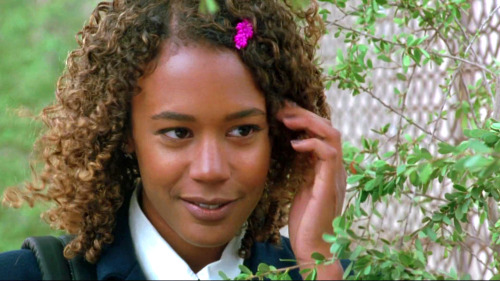
An outcast at her Los Angeles school because of her skin color, Rochelle befriends girls on the fringe who form a coven to regain power over their teenage lives. Rochelle is not only one of the witches in the main cast, but a skilled swimmer whose goal is to make the high school team. When this is hindered by a racist school bully, Rochelle aptly casts a spell to make the girl’s hair fall out. In addition to this, she has the power of telekinesis, levitation, and glamouring. Though left without power at the end of this cautionary tale, Rochelle is a rare portrayal of black women unapologetically using their power towards their own goals.
“I drink of my sisters and I ask for the ability to not hate those who hate me. Especially racist pieces of bleach-blonde shit like Laura Lizzie.” - Rochelle
Eve Batiste, Mozelle Batiste Delacroix, Elzora - Eve’s Bayou, 1997
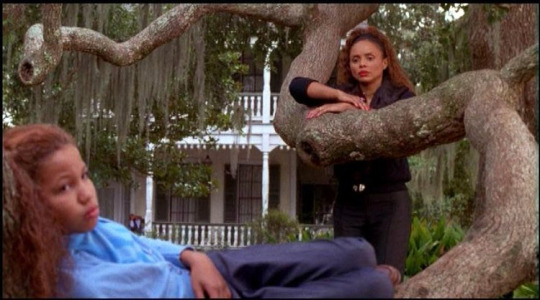
This trio took African-American cinema to new heights in its portrayal of black women with clairvoyance and voodoo. Eve, the youngest, finds her dreams to be visions of tragedy to come. Her gift of sight mirrors her aunt Mozelle’s, a woman who not only has visions, but reads people’s lives by holding their hands. Mozelle also sparingly uses voodoo to help customers if they’re desperate enough. Eve and Mozelle encounter Elzora, an elderly woman who tells fortunes at the market and proves to be quite twisted. The three are brought together in a tragic coming-of-age tale in which Eve takes on her troubled family one summer in a Louisiana bayou.
“Like others before me, I have the gift of sight. But the truth changes color, depending on the light. And tomorrow can be clearer than yesterday. Memory is the selection of images, some elusive, others printed indelibly on the brain. Each image is like a thread, each thread woven together to make a tapestry of intricate texture. And the tapestry tells a story, and the story is our past.” - Eve
Raven Baxter - That’s So Raven, 2003 - 2007
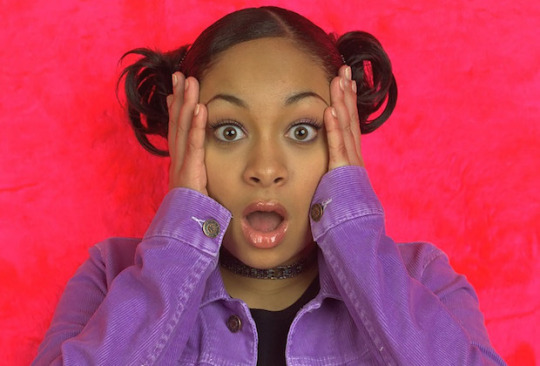
Dealing with friendships, boys, and dreams of becoming a fashion designer, a huge part of Raven’s life are her psychic visions of the future. She’s very insecure about being seen as a freak if anyone finds out, but also has unique experiences and life lessons during her adolescence in San Francisco because of her gift. Raven afforded many children and teens a lighthearted, relatable portrayal of Black Girl Magic in comedy. She returns as the star of spinoff and sequel series Raven’s Home, which aired in July 2017 and is set in Chicago.
“Oh, snap!” “Ya nasty!” “I’m okay!” - Raven
Alex and Cam - Twitches, 2005, & Twitches Too, 2007
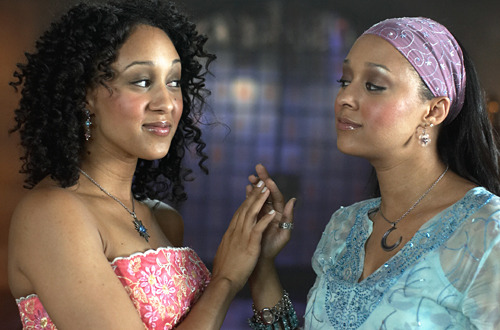
Cam and Alex discover their powers and one another on their 21st birthday, and soon find out that they belong to a world of witches and warlocks called Coventry that they were taken from at birth for their own safety. They must save the day in both films, using their combined powers that coincide with the sun and moon. This portrayal of witches is on the spectrum between previously-mentioned Raven Baxter, an original TV character, and the upcoming Bonnie Bennett, another book character that undergoes a race lift for the TV adaptation.
Bonnie Bennett and The Bennett Family - The Vampire Diaries, 2009 - 2017
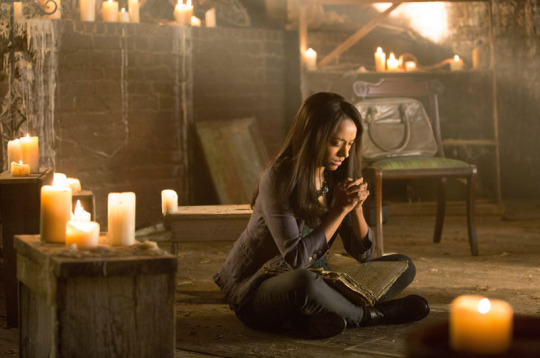
Bonnie discovers her penchant for witchcraft as a teenager when her best friend gets involved with vampires. She goes on a journey of honing her powers, learning from her grandmother Sheila that they hail from a long line of matriarchal witches. They are descendants of Emily Bennett, who was a powerful witch in Mystic Falls, VA in the 19th century, as well as one of the most powerful witches of all time, Qetsiyah. Bonnie experiments with both dark and natural magic, eventually developing the powers of divination, healing, necromancy, and psychokinesis (aero, bio, pyro, and tele). Through Bonnie’s storyline, audiences have an example of Black Girl Magic through several generations of powerful women in the same family.
“Witchcraft has its limits. If I push too hard, it pushes back.” - Bonnie
Queenie and Marie Laveau - American Horror Story: Coven, 2013 - 2014
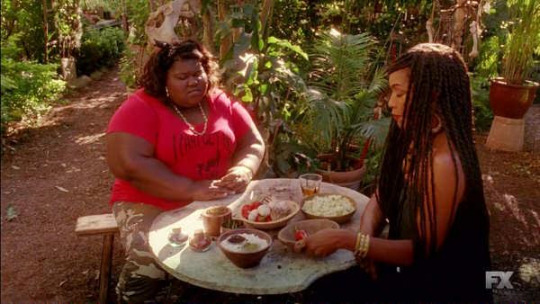
Queenie, a new student at Miss Robichaux’s Academy in New Orleans, is descended from Tituba of the Salem Witch Trials, and calls herself a “human voodoo doll,” able to transfer self-inflicted wounds and pain to others. She later performs telekinesis, teleportation, mind control, and astral projection. For a time, Queenie joins the fold of Voodoo Queen Marie Laveau, based on the real-life, renowned figure. Marie survives to modern times because of an immortality deal with Papa Legba, in which she must sacrifice an innocent once a year. In addition to her voodoo mastery, Marie demonstrates telekinesis, teleportation, necromancy, and a war cry that causes people to turn on one another. Both Queenie and Marie take on an immortal racist and other threats in the war between hunters, voodoo practitioners, and witches in this campy, dark story.
“I grew up on white girl shit, like Charmed and Sabrina The Teenage Cracker.” - Queenie
Abbie & Jenny Mills - Sleepy Hollow, 2013 - 2017
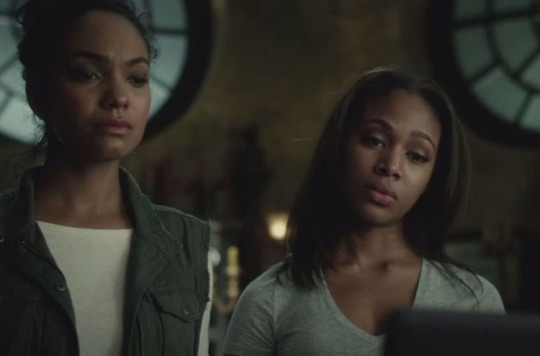
Abbie, who has prophetic dreams, learns that she is one of Two Witnesses in the Book of Revelation meant to prevent the apocalypse with Ichabod Crane. A Lieutenant originally headed to the FBI, she remains in Sleepy Hollow, NY to rise to the cause. She can also see spirits, have visions of the past, and assist with casting spells. Her sister Jenny is drawn into the fight, having seen the demon Moloch when they were children, as a supernatural relic hunter. This is one of the rare portrayals of black women, fantasy, and the Bible coming together.
“Here's what we can do: no more first-hand accounts of witches or founding fathers. Or donut tax outrage unless you want to be sent back to the asylum.” - Abbie
These portrayals of Black Girl Magic, which feature characters who have storylines independent of their white counterparts, are markedly different from “The Magical Negro” stereotype in cinema. The Magical Negro was first seen with The Song of the South (1946), but mostly lends itself to male characters. The handful of black women who fall into this category are Oda Mae Brown in Ghost (1990); Mother Abagail in adapted miniseries The Stand (1994); Jezelle Gay Hartman in Jeepers Creepers (2001); Missouri Moseley on a single episode (2005) of Supernatural; and Evelyn in Annabelle (2014). These characters have no purpose in the story beyond helping white ones, even going so far as to sacrifice themselves in some instances.
Black Girl Magic speaks to a beauty and power that black women have on their own, as evidenced by stronger characters in TV and film recently. Fortunately, the road doesn’t end here. Coming to television soon are actresses Sibongile Mlambo in the role of a mermaid on the Freeform show Siren, and Clark Backo in the role of a psychic and descendent of Supernatural’s Missouri Moseley on Wayward Sisters at The CW. On the big screen, expect to see Oprah Winfrey in the role of Mrs. Which for Ava DuVernay’s A Wrinkle in Time in 2018.
As black women continue to see the magic within themselves, they can now see even more of it represented on screen.
*This piece was published August 9th to Shades of Melanin, Inc.
**Update: On September 7th, Twitches was added to this Tumblr post.
0 notes